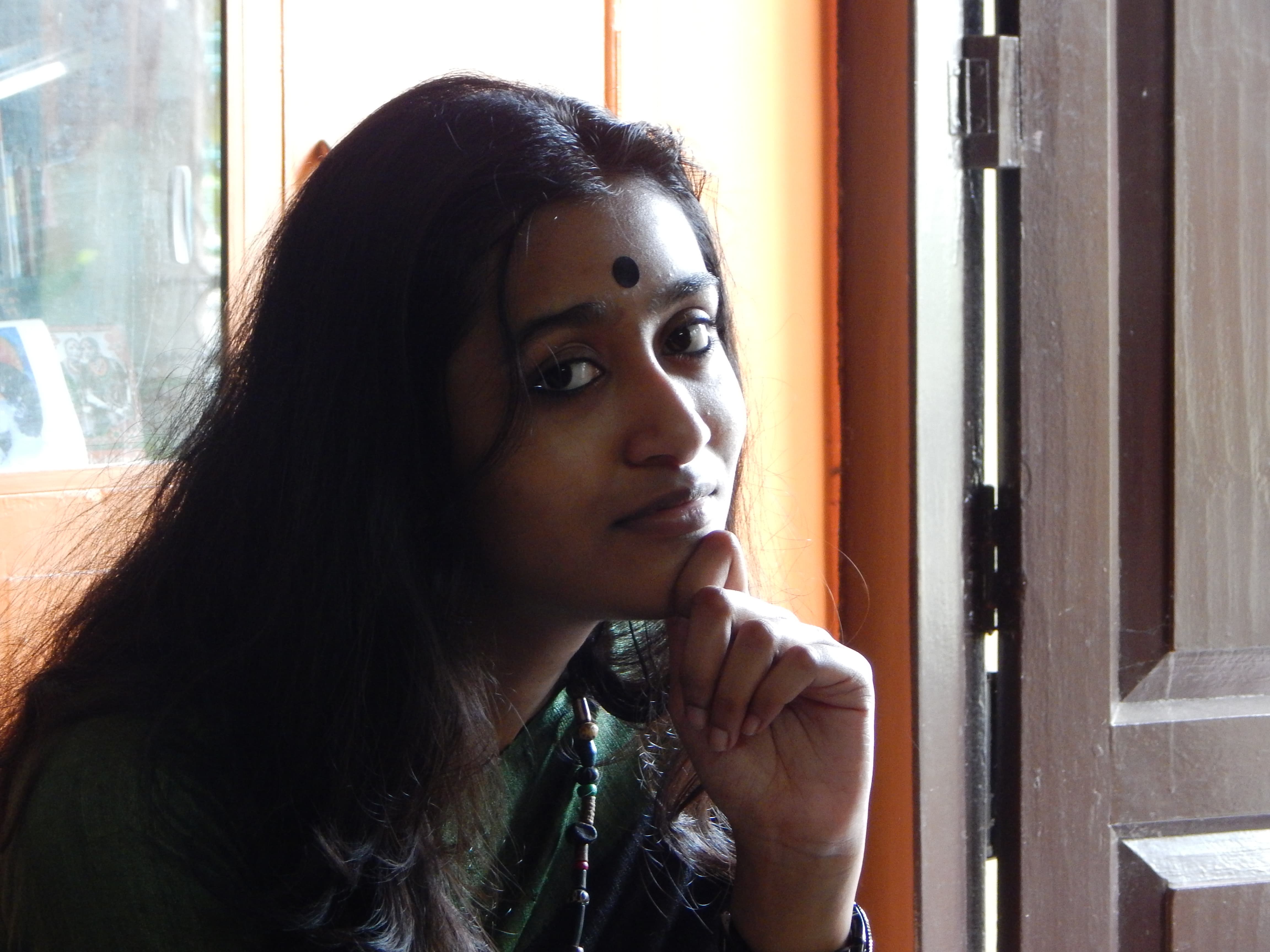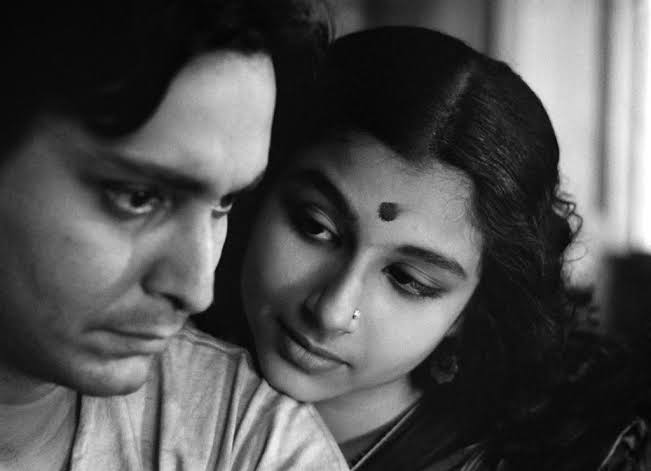
Post-independence, film connoisseurs of Indian cinema chose to build personal archives by collecting VCRs of their favourite films. SATYAJIT RAY shared that passion. Known among his admirers as an ardent cine-buff, Ray immortalized a film through his 'Apur Sansar'. On his birth anniversary today, SRAGDHARAMALINI DAS offers a rare glimpse into the legend's attempt at archiving by exploring the film-within-a-film concept
Why BFA commissioned this piece:
Satyajit Ray's life and works have been a subject of many analytical pieces. We, at BFA, wanted to bring to light how Ray applied his artistic acumen in rendering a deeper meaning to his 'Apur Sansar' by archiving a mythological film within it. SRAGDHARAMALINI DAS' interest in research-oriented writing seemed to be a good fit to do justice to such a subject
Closely following the recognition of cinema as a significant cultural form in the new Indian nation-state, its safekeeping received striking attention. Besides resulting in the formal creation of the National Film Archive of India (NFAI) in 1964, this precipitated the proliferation of privately owned unofficial archives in the form of VCRs during the 1970s. If for the longest time such archives were more concerned with preserving and accessing the original, then with the 1990s rise of the internet and the burgeoning of interactive platforms thereafter, cinephiles claimed the liberty of creatively engaging with available source materials. This manifested in the sharing of short entertaining scenes extracted from both old and contemporary films as well as the compilation of scenes from different films that represent a particular theme that the compiler wishes to highlight. Undoubtedly, such postmillennial video clips too fulfill the role of documenting existing cinematic artefacts hitherto played by archives, even if through subversion. However, inspired by his characteristic prescience, already by the late 1950s the renowned filmmaker Satyajit Ray had assumed such an experimental — albeit lesser known — stance by creatively archiving films within films. This is illustrated by one of his earlier works, namely Apur Sansar (1959), the first to have been produced under the banner of Satyajit Ray Productions, that sets up a brief intertextual conversation with a film titled Dhruba (1953).

The Archival Appropriation of Dhruba
Directed by a contemporary filmmaker named Chandrasekhar Bose, Dhruba relates the legend
of the eponymous mythical character (played by Bibhu Bhattacharya) from the Vishnu Purana.
Born to King Uttanapada (Ajitprakash) and his abandoned wife, Suniti (Bani Gangopadhyay),
Dhruba’s rejection by his father leads him to leave his mother to seek the refuge of the spiritual father Lord Vishnu. The film follows the indomitable asceticism exhibited by the small boy in the
face of maleficent divine machinations, ultimately helping him secure Vishnu’s benevolence
whereafter Dhruba is blessed with immortality by being turned into the North Star or dhrubatara
— to be remembered forever. About halfway into Ray’s Apur Sansar, the protagonist
Apurba/Apu (Soumitra Chattopadhyay) and his wife, Aparna (Sharmila Tagore), are shown
watching Dhruba in a theatre.
Yet, if one goes back to the original novel, Aparajito (1931), by Bibhutibhushan Bandopadhyay, one immediately recognizes its difference from Ray’s cinematic adaptation
Yet, if one goes back to the original novel, Aparajito (1931), by Bibhutibhushan Bandopadhyay, one immediately recognizes its difference from Ray’s cinematic adaptation. Not only does Bandopadhyay’s writing lack any reference to this specific mythological film, but also that as opposed to Ray’s dedication of the entirety of one minute to this theatre scene, Bandhopadhyay’s narrator merely tells the readers in a span of two lines that Apu had taken Aparna to the theatre a couple of times without explicitly outlining any detail about the kind of films the couple may have seen.
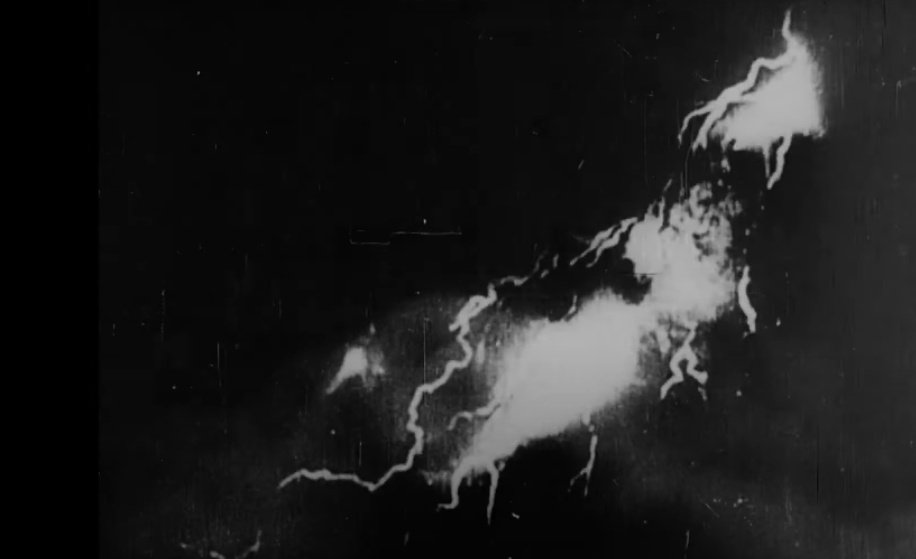
Ray’s expansion of this almost nugatory detail seems to betray his cinephilia. It is perhaps not coincidental that the film Ray chooses frequently employs spectacular curiosity-invoking tools typically associated with the cinema of attractions, as theorized by Tom Gunning, such as the animation of a star moving from one corner of the frame to another, or the dissolution/transmogrification of one character into another — techniques which Ray himself would apply a decade later in his fantasy film, Goopy Gyne Bagha Byne, (1969). Moreover, Dhruba’s image archive meaningfully complements the content of Ray’s film.
Viewers would remember that soon after this scene, Aparna is shown leaving Apu for her natal house, following which she is estranged from both Apu and her newborn son Kajal (Alok Chakravarty) through maternal death, while Apu intentionally distances himself from Kajal for years, blaming him for Aparna’s demise. Thus, the theme of separation and abandonment in Dhruba foreshadows the multivalent partings that Ray’s characters go on to experience.
Ray’s decision of digressing from this novelistic suggestion by using a motion picture with synchronized sound was an instance of anachronism, and it wouldn’t be his last
Reading Apur Sansar as Archiveology
While, the story of Dhruba directly aided the narrative coherence of Apur Sansar, this account fails to exhaust the implications of Ray’s archival choice. Considering that both the first Indian Talkie film, Alam Ara, and the first Bengali Talkie film, Jamai Shashthi, were only released after 1931, the cinematic references in Bandopadhyay’s 1931 novel could only have been to movies from the erstwhile silent era. In fact, Bandopadhyay’s descriptive emphasis on the movement of the pictures is more aligned with the exclusively visual astonishment intrinsically related to the first three cinematic decades that produced silent films. Ray’s decision of digressing from this novelistic suggestion by using a motion picture with synchronized sound was surely an instance of anachronism, and it wouldn’t be his last.
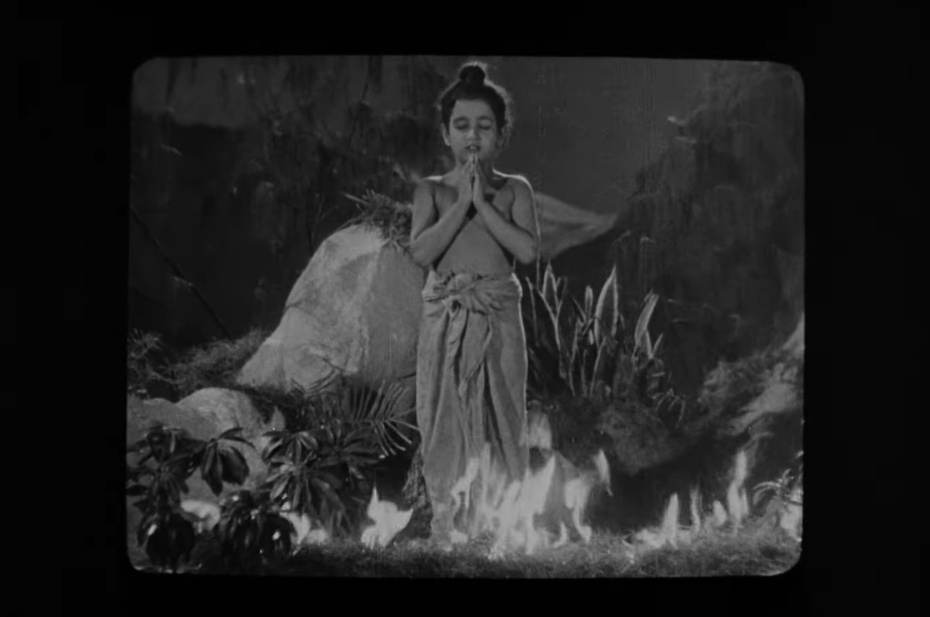
A shot from 'Dhruba' depicting Dhruba’s trials, incorporated in 'Apur Sansar'
Indeed, scholar Chandak Sengoopta notes how in his later film, Charulata (1964), one finds references to Bankimchandra Chattopadhyay’s novel, Anandamath (1882). Given that Charulata was set in 1879-80, Bankim’s novel couldn’t have been accessible to the film’s characters and was arguably only inserted by Ray to highlight the Indian nationalistic discourse in the filmic text as opposed to its relative backgrounding in Rabindranath Tagore’s novel on which the film was based. The anachronism that one finds in Apur Sansar seems to have a two-fold significance. Firstly, being a Talkie film itself, the soundscape of Dhruba incorporated in the theatre scene helps fill up any auditory blankness that may have otherwise been caused in Apur Sansar. Secondly, using scenes from Dhruba with sounds conveying a thunderstorm immediately allows Ray to remind the viewers of the destructive storm witnessed in Pather Panchali (1955), the first of his Apu Trilogy, that results in the death of Apu’s sister, thereby further facilitating the previously discussed portentous function of the theatre scene.
Another particularly curious aspect of Ray’s choice is his preference for 1953 cinematic version of this mythological story over the 1934 one by the same title (though its official English title is spelt as Dhurbo, with an ‘o’)
Another particularly curious aspect of Ray’s choice is his preference for 1953 cinematic version of this mythological story over the 1934 one by the same title (though its official English title is spelt as Dhurbo, with an ‘o’). Given that even this older film was a talkie, it would hardly have quelled the problem of anachronism suggested above. Additionally, since mythological stories, as opposed to ‘social films’, eschew bearing any explicit markers of the time of production in terms of the set design – often shot in forests or against ornately designed backdrops to suit the ancient period of diegetic reference, away from modern developmental cues easily discernible in ‘real’ locations – choosing the film farther removed from the narrative timescape of Apur Sansar (before and around the 1930s) wouldn’t have introduced any drastic incongruencies. Yet another factor explaining Ray’s decision could be the sheer bad timing of the 1934 cinematic version. While the movie was released at the then-famous Crown Theatre that exhibited other religious/mythology-themed films like Joydeb (1933), Radha Krishna or Kalank Bhanjan (1933), Sabitri (1933), Sree Gouranga (1933), and Chand Saudagar (1934) around the same time as Dhrubo, one must remember that Ray (born in 1921) was only a boy of twelve at that time. Even Ray’s biographer, Andrew Robinson, only mentions his exposure to Hollywood films, especially works of Charlie Chaplin, Buster Keaton, Harold Lloyd, and Ernst Lubitsch, during his schooldays. Thus, there is a high possibility that Ray wasn’t even aware of the existence of this film.
If such was the case, then it would once more bear testimony to the mass oblivion that shrouds the Bengali poet, Kazi Nazrul Islam, who also happens to be an actor/singer in (playing the character of Narada) and co-director of the 1934 film. In fact, Hasan Mansoor Chatak discusses Nazrul’s many contributions to the film industry including the formation of the first Bengali Muslim film production house named Bengal Tiger Pictures, which unfortunately slackened and died away with the declining health of Nazrul. However, these efforts have failed to have been archived both by the Nazrul Institute (established in 1985 in Bangladesh) as well as the Bangladesh Film Archive, formed in 1978, much after East Pakistan won the liberation war and renamed itself as Bangladesh. Furthermore, despite the archival efforts that have been made in India over the last sixty decades, only one of the eighteen reels of Dhrubo is accessible by the public today. Thus, even if Ray knew about the existence of the Nazrul-directed version, it would arguably have been next to impossible for him to acquire the film. This explains why the 1953 film may have been an uncomplicated and perhaps the only archival choice for Ray.
The creative appropriation of Dhruba-as-an-archive displayed in Apur Sansar for enhanced meaning-making in fact anticipates the concept of archiveology. Originally coined by director Joel Katz in 1991, archiveology refers to the unique cinematic language generated by filmmakers who engage with and recycle material from film archives in their own works. Film scholar Catherine Russell discusses that any such engagement necessarily involves a ‘search function’ or preliminary research on the part of the experimenting filmmaker who, in addition to selecting a particular film, has to choose scenes (much like one has to hunt down canned films in physical archives) which would be productive to his intended purpose. Elements of such research can be found in the discontinuities discernible in the Dhruba screening in Ray’s theatre scene. The portrayal of Dhruba is fragmented not just due to the shot-reversal shot in between that tries to capture the couple’s reaction to the cinematic action, but also because of Ray’s highly selective decoupage and montage of scenes from the original film that for instance provides space to the visuals of the thunder, while cutting out the bewildered movement of jungle animals that intersperse the thunderstorm shots in the original.
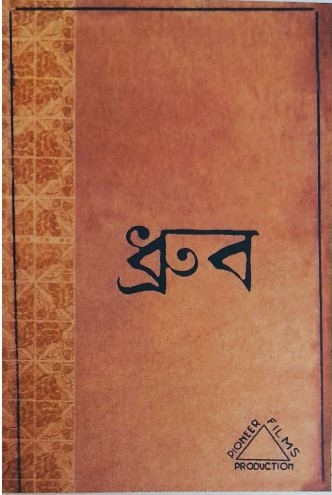
Booklet cover of the film Dhrubo, made in 1934
The (Re-)Documentations of an Inauthentic Archive
While editing practices as discussed above may earn such experimental cinematic sequences the censure of inauthentically depicting the original which are thereby contrary to the preserving function of archives, Russell maintains that such ‘inauthenticities’ are often propelled by ethical interventions. For these interventions to work, however, Russell states the director must overcome the challenges posed by the viewers’ lack of knowledge about the source of the archival scenes, which in turn may hinder their meaning-making process. Ray’s choice of Dhurba surmounted this interpretive difficulty in two ways: having been released only six years prior to Apur Sansar, its freshness in the mind of cinephiles helped them immediately connect with this film-within-the-film; and being based on a well-known mythological story, it worked even for those who weren’t familiar with the cinematic version.
Indeed, by selecting scenes from the original that do not figure any female character, Ray’s archiveology highlights the critical absence that shrouds the depiction of female experiences in a positive light
Thus equipped with the basic necessity of understandability, the theatre scene directly disrupts Bandopadhyay’s novelistic characterization of the couple to forward a more sympathetic attitude towards the film’s female character Aparna. While Bandopadhayay acts economically in his descriptions of the type of films that the couple may have watched, he expends a considerable amount of space to catalogue Aparna’s inanity in terms of failing to understand both the films’ plot as well as how the on-screen pictures move, depending on Apu for explanations, perhaps in an effort to indirectly commend Apu’s rational bent of mind. In contrast, the reverse shot in the theatre scene that reveals the couples’ reaction to Dhruba shows Aparna to have been moved to tears while Apu’s flippant expression seems to express his failure to sympathize with the film’s poignant storyline. Not only does Aparna’s ability of independently reacting to the film subvert Bandhopadhyay’s original characterization, but when the viewers later realize that she is expecting to be a mother soon, her sentimental reaction towards Dhruba’s suffering gains further significance. Without completely dismissing Apu’s more cerebral, secular reaction to the other-worldly spiritual drama, Ray’s intervention points to the limitations of plain rationality that cannot be deemed inherently superior to ‘irrational’ emotions associated with the differential female experience of motherhood discernible in Aparna’s reaction. Indeed, by selecting scenes from the original that do not figure any female character, Ray’s archiveology highlights the critical absence that shrouds the depiction of female experiences in a positive light.
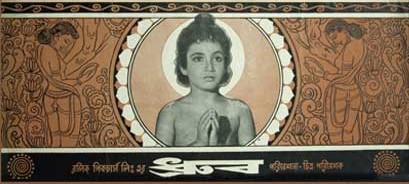
Booklet cover of the film Dhruba, made in 1953
Besides becoming a creative archive for Dhruba, Apur Sansar documents and refers to many film-going practices. For instance, Aparna is shown to be holding a slim paper cone or thonga possibly containing peanuts that movie-goers often bought from peddlers outside halls. Again, viewers who are aware that Dhruba was originally shown in three showhouses, namely Sree, Prachi and Purna, would probably be reminded of their memories of being in the spaces of these halls even if Ray himself may not have shot his film in any of these showhouses, thereby instigating the act of remembering that is a salient role played by any archive.
When proposals for the establishment of NFAI were first being aired, there was a crucial tension surrounding the function that such an establishment would play. Should it only preserve canned films or should it also be involved in the lending and circulating these for different screenings?
What is the best form of preservation — latency or manifestation? Assuredly, the quandary was about defining an archive. It was against such a conflicted atmosphere that Ray made the decision of using archival material in Apur Sansar. In doing so, he transformed his film into an archive for another— selectively appropriating the original to filming/canning something new — even if for the meagre duration of a single minute

